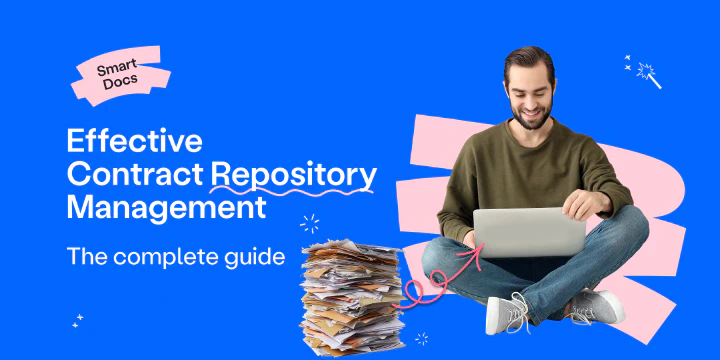Demystifying Legalese: Your 2025 Guide to Simplifying Legal Language
Legalese often complicates legal documents with its dense and complex language. Our guide helps you understand, speak, and simplify legalese, ensuring clarity in your contract management processes.

Introduction
Legal documents can often feel like they’re written in a foreign language. This “language” is called legalese, and it’s known for being dense, complicated, and sometimes downright confusing. For anyone involved in contract management, understanding legalese is crucial. It’s not just about knowing the definitions of terms; it’s about navigating the complex structure and jargon to ensure clarity and avoid misunderstandings.



When one person's work terminology is another one's riddle.
Let’s start with a fun fact: the term “creditor in legalese” often appears in crossword puzzles like the NYT (New York Times Crossword), with the answer being “obligee.” As you can see, the goal with using legalese here wasn’t to be helpful, but to make things more complicated.
With this prime example in mind, let’s dive into the world of legalese, understand what it is, why it exists, and how you can make sense of it.
What is Legalese?
Definition
Legalese is the formal and technical language used by lawyers, judges, and legal professionals in legal documents, laws, and communications. It often includes complex words, long sentences, and specialized terms that can be difficult for non-lawyers to understand. That’s why it’s also known as legal English, legal jargon, or legal speak. Legalese is meant to be precise so that rights, obligations, and legal procedures are clearly defined and cannot be misunderstood.
Pronunciation
How do you pronounce “legalese”? Legalese is pronounced as “lee-guh-leez.” Understanding this term is the first step in demystifying the language of law.
What does legalese mean?
Legalese is the formal and technical language found in legal documents, featuring long sentences, specialized jargon, and often archaic terms. Although it aims for precision and clarity, legalese frequently becomes confusing and difficult for the average person to understand.
Think about the last time you tried to read a legal document. Did it feel like you were wading through a swamp of words? That’s because legalese is designed to cover all bases and leave no room for misinterpretation, but in doing so, it adds layers of complexity.
Importance of Knowing Legalese in Legal Documents
Understanding legalese is important for several reasons:
- Clarity: Knowing the language helps you understand the exact terms and conditions you’re agreeing to.
- Compliance: Ensures you meet all legal requirements and avoid potential legal issues.
- Negotiation: Helps you negotiate better terms by fully understanding what’s being proposed.
For instance, if you’re managing contracts, knowing legalese can help you identify unfair terms or obligations that could impact your business negatively.
What is an example of legalese?
Examples of Legalese include:
Affidavit:
- Legalese: “I, the undersigned, hereby depose and state under penalty of perjury that the facts contained herein are true and correct to the best of my knowledge, information, and belief.”
- Plain English: “I swear that everything in this document is true, as far as I know.”
Indemnity:
- Legalese: “The indemnifying party agrees to indemnify, defend, and hold harmless the indemnified party from any and all claims, damages, liabilities, losses, costs, and expenses arising out of or related to the performance of this agreement.”
- Plain English: “You agree to protect me from any problems, costs, or damages that happen because of this agreement.”
Jurisdiction:
- Legalese: “The parties hereby submit to the exclusive jurisdiction of the courts of [specific location] for the resolution of any disputes arising out of or in connection with this agreement.”
- Plain English: “Any legal disputes about this contract will be handled in the courts of [specific location].”
Understanding these terms and their usage can make a big difference when reading legal documents. For example, knowing that “indemnity” involves compensation can help you grasp the financial implications of a contract clause.
“In Witness Whereof” Meaning and Usage
The phrase “in witness whereof” is a classic example of legalese. It’s used to conclude legal documents, indicating that the parties involved have agreed to the terms. Here’s how it’s typically used:
“In witness whereof, the parties hereto have executed this Agreement as of the day and year first above written.”
This phrase may seem archaic, but it serves a specific purpose in ensuring the document is formally recognized as legally binding.
Legalese Examples in Everyday Legal Documents
Here are some examples of legalese in common legal documents:
- Lease Agreements: Terms like “tenant” (the person renting) and “lessor” (the property owner) are frequently used.
- Wills: Phrases such as “bequeath” (to leave personal property to someone) and “executor” (the person responsible for carrying out the terms of the will) are standard.
- Employment Contracts: You might see terms like “at-will employment” (employment that can be terminated at any time by either party) and “non-compete clause” (a clause restricting the employee from working with competitors).
Understanding these terms helps you navigate and comprehend legal documents more effectively.
Why it can be problematic
Unnecessary Complexity and Jargon
One of the main criticisms of legalese is that it often adds unnecessary complexity to documents. Here’s why this can be problematic:
- Accessibility: Complex language can make legal documents inaccessible to those without a legal background, potentially leading to misunderstandings.
- Time-Consuming: Wading through dense text takes time and effort, which can be frustrating and inefficient.
- Intimidation: The use of overly complex language can intimidate and deter people from fully engaging with the document.
For example, instead of saying “prior to the commencement of the contractual obligations,” simply saying “before the contract starts” is clearer and more straightforward.
How It Can Lead to Misunderstandings
The complexity of legalese can often lead to misunderstandings. Here’s how:
- Misinterpretation: Readers may misinterpret complex clauses, leading to unintended consequences or disputes.
- Omissions: Important details can be overlooked if the reader is struggling to understand the language.
- Compliance Issues: Misunderstanding legal requirements can result in non-compliance, with potential legal repercussions.
Consider a scenario where a contract states, “The party of the first part shall indemnify and hold harmless the party of the second part.” Without understanding what “indemnify” and “hold harmless” mean, one might not realize this clause involves taking on significant financial responsibility.
Examples of Overly Complex Legal Language
Here are some examples of needlessly complex legalese and their simpler alternatives:
- Before: “Prior to the occurrence of” can be simplified to “before.”
- About: “Concerning the matter of” can be simplified to “about.”
- Because: “Due to the fact that” can be simplified to “because.”
By simplifying these phrases, legal documents become more accessible and easier to understand for everyone involved.
A Quest to Simplify Legalese
Techniques to Simplify Legal Language
Simplifying legal language is not just about making documents easier to read; it’s about making them more transparent and accessible. Here are some effective techniques:
- Use Plain Language: Substitute complex terms with simpler alternatives. For example, use “start” instead of “commence.”
- Shorten Sentences: Break long, convoluted sentences into shorter, clearer ones. This makes the text easier to follow and understand.
- Avoid Redundancy: Eliminate unnecessary words and phrases. Legal documents often use redundant expressions for emphasis, which can be simplified without losing meaning.
- Active Voice: Use active voice instead of passive voice to make sentences clearer. For example, “The contractor will complete the work” is clearer than “The work will be completed by the contractor.”
- Define Terms: Provide definitions for any legal terms that must be used. This ensures that all readers understand the specific meaning in the context of the document.
For instance, a clause that reads, “The aforementioned party of the first part shall heretofore be responsible for the payment of all sums due hereunder,” can be simplified to, “The buyer will pay all amounts due under this contract.”
Benefits of Using Plain Language in Legal Documents
Using plain language in legal documents has several benefits:
- Clarity: Clearer language reduces the risk of misinterpretation and ensures all parties understand the terms.
- Efficiency: Simpler documents are quicker to read and review, saving time for everyone involved.
- Trust: Transparent language builds trust between parties, as it demonstrates an effort to be straightforward and honest.
- Accessibility: Plain language makes legal documents accessible to a wider audience, not just those with legal training.
For example, a lease agreement that uses plain language ensures that tenants understand their obligations and rights, reducing potential disputes and fostering a better landlord-tenant relationship.
Avoid it when possible, understand it when necessary
Mastering legalese is not just about understanding a different language; it’s about ensuring clarity and precision in legal documents. By familiarizing yourself with common terms and practicing regularly, you can improve your legal literacy.
Legalese doesn’t have to be a barrier. By understanding its intricacies and applying strategies to simplify it, you can make legal documents more accessible and less intimidating. Whether you’re managing contracts or just trying to understand a lease agreement, these skills are invaluable. With practice and the right tools, you can master legalese and ensure that your documents are clear, precise, and effective.
Please keep in mind that none of the content on our blog should be considered legal advice. We understand the complexities and nuances of legal matters, and as much as we strive to ensure our information is accurate and useful, it cannot replace the personalized advice of a qualified legal professional.

Table of contents
Want product news and updates? Sign up for our newsletter.
Other posts in Contract-Management

SaaS contract management explained for buyers and vendors
If you work in SaaS, you know how quickly contracts can pile up. Each one comes with its own terms, renewals, …

The Complete Guide to Effective Contract Repository Management
A contract repository is where every agreement your business depends on finally finds its place. No cluttered …

How to Review Business Contracts Like a Pro in 2025
When it comes to business contracts, what you don’t catch can hurt you. That’s why reviewing a business …
Contracts can be enjoyable. Get started with fynk today.
Companies using fynk's contract management software get work done faster than ever before. Ready to give valuable time back to your team?
Schedule demo

